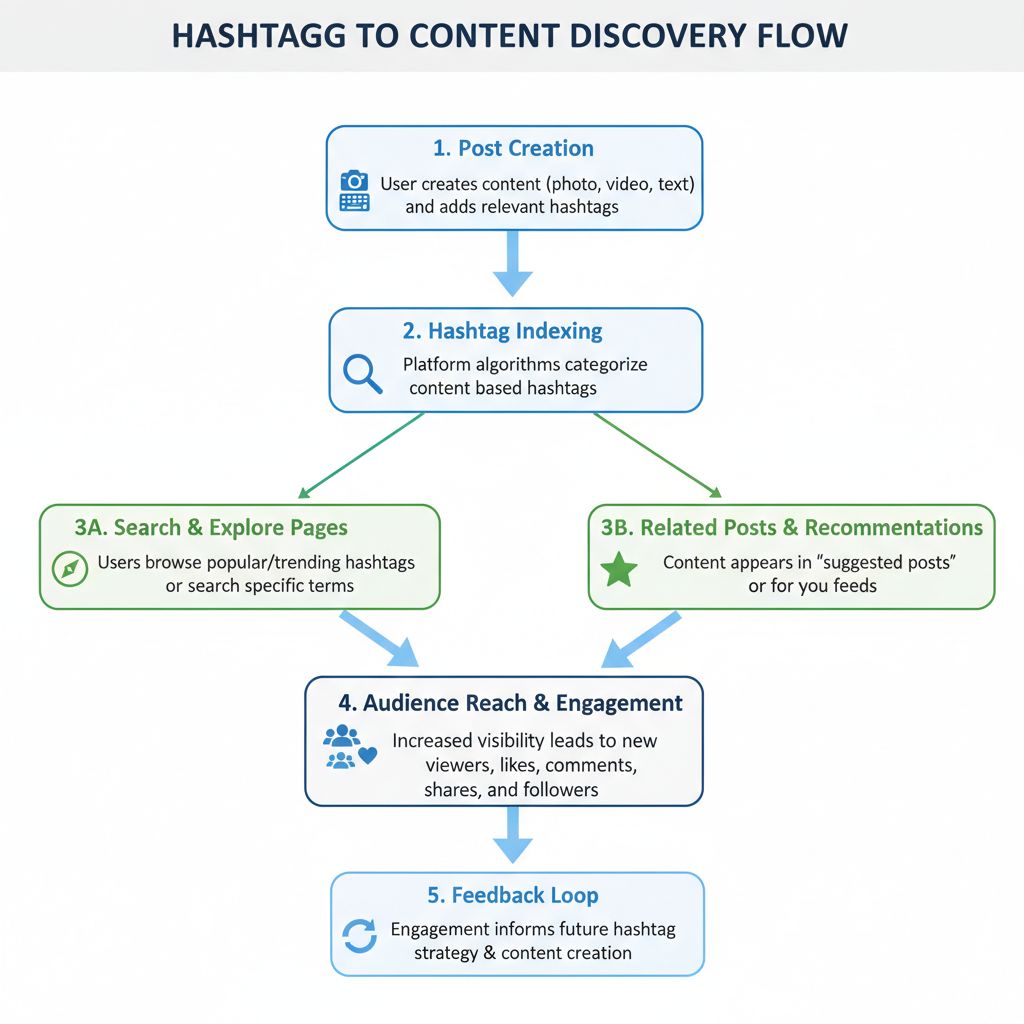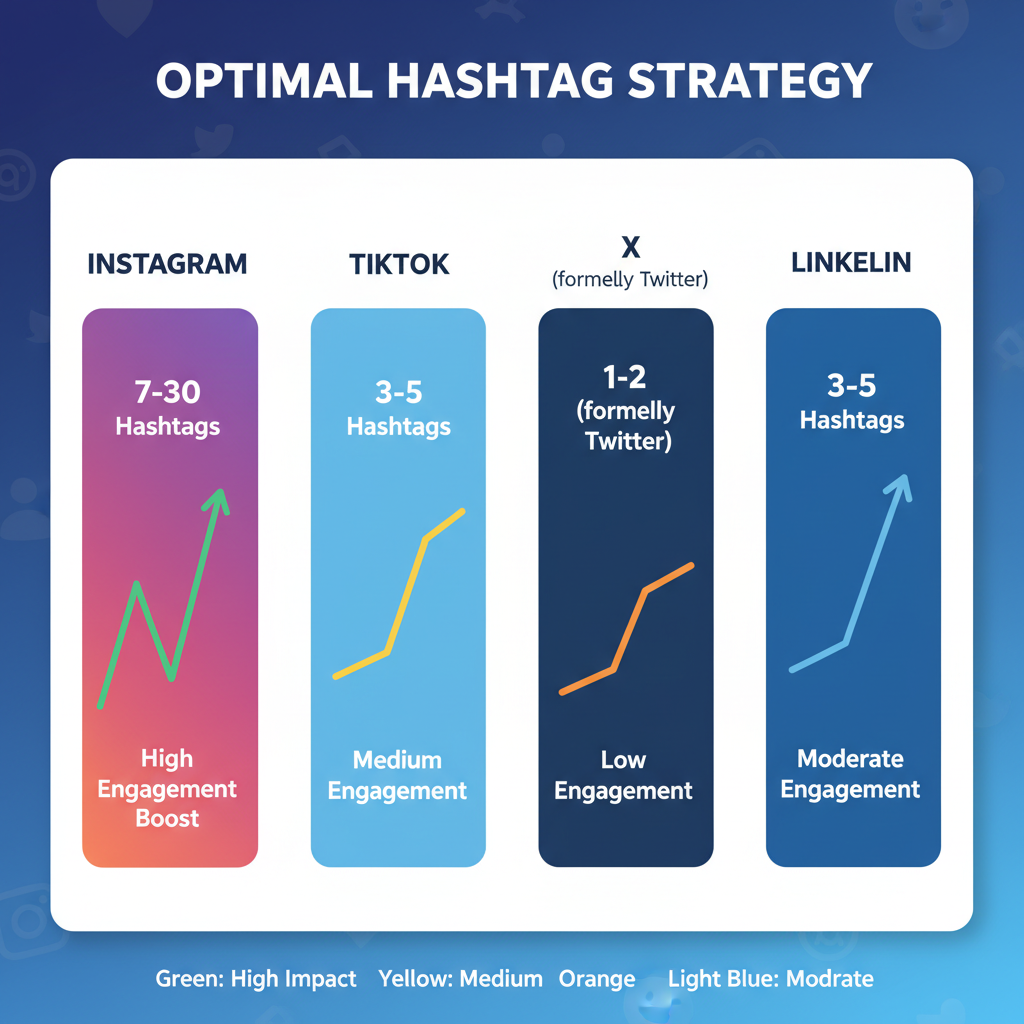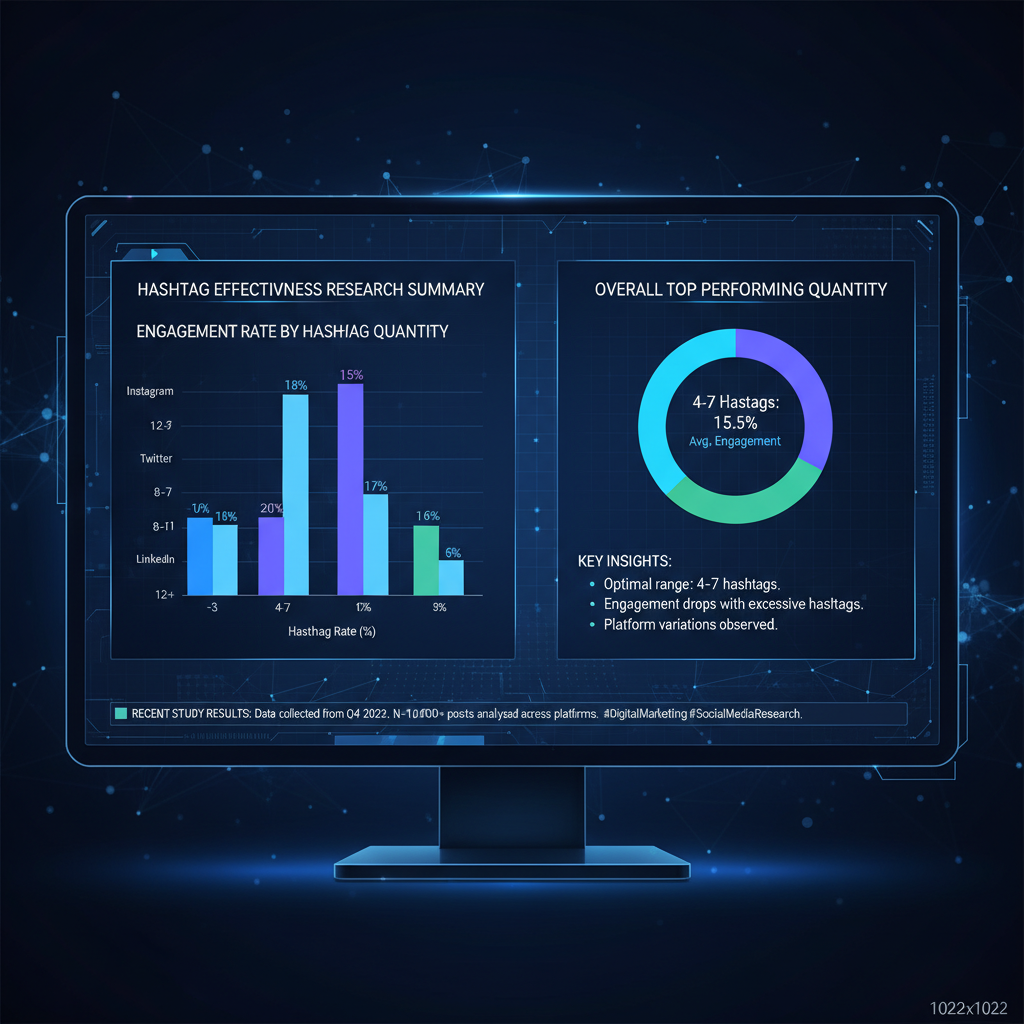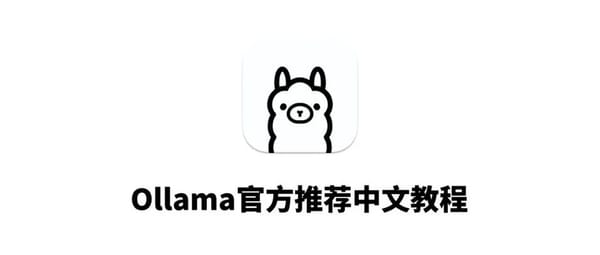Optimal Number of Hashtags for Social Media Engagement
Learn how to choose the optimal number of hashtags for Instagram, TikTok, Twitter, and LinkedIn to boost social media reach and engagement.

Introduction: Finding the Optimal Amount of Hashtags for Maximum Reach
In social media marketing, choosing the optimal amount of hashtags can be the difference between reaching thousands of new viewers or getting lost in the feed. Hashtags act as discovery tools, connecting your content with relevant conversations, niche communities, and trending topics. This guide explores how hashtag use varies across platforms, what current research says, and actionable strategies to determine the right hashtag count for your brand.
---
Understanding Hashtags and Their Role in Content Discovery
Hashtags are keywords or phrases preceded by the `#` symbol. They help categorize posts, making them discoverable by audiences searching for specific topics or trends. They serve as metadata tags—once added to a caption or comment, they link your post to a broader flow of related content.
In practical terms, hashtags:
- Increase reach beyond current followers.
- Improve content discoverability.
- Help connect with niche communities.
- Play a role in trend participation.

If you’re asking “what is the optimal amount of hashtags?”, the answer depends on platform mechanics, audience behavior, and the relevance of the hashtags used.
---
How Hashtag Use Differs Across Platforms
Hashtag functionality varies by social media network. Each platform has its own guidelines, engagement algorithms, and audience norms.
Instagram posts can have up to 30 hashtags. Many marketers use between 5–15 to avoid appearing spammy while still gaining discovery benefits.
TikTok
TikTok’s algorithm heavily considers hashtags for categorization. Short, trend-based hashtags are common—often fewer than 10—combining trending and niche tags.
Twitter (X)
Tweets have space constraints, making 1–2 hashtags optimal. Overusing hashtags can reduce clarity and engagement.
On LinkedIn, 3–5 hashtags related to your professional or industry niche perform best. Excessive hashtag use can appear unprofessional.
---
Current Research on Hashtag Effectiveness
Social media analytics studies reveal:
- Instagram posts with 9–11 relevant hashtags often achieve higher engagement than posts with 0 or 30.
- TikTok discoverability increases with challenge or trending hashtags tied to the content theme.
- Twitter engagement declines when posts include more than 2 hashtags.
- LinkedIn reach improves when hashtags are industry-specific, with fewer generic tags.
---
Few vs. Many Hashtags — Pros and Cons
| Approach | Pros | Cons |
|---|---|---|
| Few Hashtags | - Looks clean and professional - Easier for audience to process - Reduces spam perception |
- May limit reach to fewer discovery channels |
| Many Hashtags | - Expands keyword coverage - Reaches multiple niches - Higher discoverability potential |
- Can look cluttered - Risk of lower quality/relevance |
---
Relevance, Niche Targeting, and Keyword Alignment
Choosing hashtags should be intentional. Relevance matters more than sheer quantity, and platform algorithms reward posts aligned with genuine topical interest.
Best practices include:
- Topical relevance – Directly match your post’s content.
- Audience targeting – Align hashtags with the demographics you want.
- Keyword synergy – Pair with your SEO keywords where possible.
- Avoid overgeneralization – Broad tags can disappear in massive feeds.
---
Grouping Hashtags Strategically
Hashtags fall into broad categories that can be combined for optimal reach.
- Broad Hashtags: High-volume tags such as `#love` or `#fitness`. High reach but high competition.
- Niche Hashtags: Focused tags like `#TriathlonTraining` or `#VeganBaking`. Lower volume but more relevance.
- Branded Hashtags: Unique to campaigns/events, e.g., `#NikeRunClub`.
A balanced mix could be:
- 2–3 broad hashtags.
- 5–8 niche hashtags.
- 1–2 branded hashtags.

---
Testing Different Hashtag Counts
An experimental approach can reveal the optimal amount of hashtags for your brand.
Step 1: Choose evergreen content.
Step 2: Post variations with different hashtag counts:
- Minimal set (1–3)
- Balanced set (5–10)
- Maximum allowed set
Step 3: Measure engagement after a set period.
Step 4: Compare results and refine your approach.Testing over 4–6 weeks generally provides enough data to make confident adjustments.
---
Tracking Hashtag Performance via Analytics
Most platforms provide built-in analytics:
- Instagram Insights: Shows impressions from hashtags.
- TikTok Analytics: Breaks down traffic sources by discovery.
- Twitter Analytics: Engagement metrics per tweet.
- LinkedIn Analytics: Post reach and engagement insights.
Third-party tools like Hootsuite, Sprout Social, or Later allow cross-platform tracking.
Tips for tracking:
- Record post date, hashtag set, reach, and engagement.
- Note seasonal changes or trending tag effects.
- Identify high-performing hashtags for reuse.
---
Platform-Specific Best Practices
| Platform | Optimal Hashtag Count | Best Practices |
|---|---|---|
| 9–11 | Mix broad, niche, and branded tags; place in caption or first comment. | |
| TikTok | 4–8 | Use trending plus relevant niche hashtags; keep them short and memorable. |
| Twitter (X) | 1–2 | Integrate hashtags into sentence flow for clarity. |
| 3–5 | Choose industry-appropriate tags; avoid overly generic hashtags. |
---
Examples of High-Performing Hashtag Sets
- Fitness Influencer (Instagram):
- `#FitnessMotivation #MorningWorkout #CardioGoals #HealthyHabits #GymLife #FitOver40 #WorkoutTips #SweatSession #PersonalTrainer #ActiveLifestyle`
- Tech Thought Leader (LinkedIn):
- `#AI #MachineLearning #DataScience #BusinessInnovation #TechTrends`
- Food Blogger (TikTok):
- `#VeganRecipes #MealPrep #HealthyEating #FoodieTikTok #PlantBased`

These sets blend broad, niche, and branded hashtag types for optimized reach and engagement.
---
Key Takeaways and Actionable Insights
- The optimal number of hashtags varies significantly across platforms.
- Relevance outweighs quantity—quality hashtags yield better targeted engagement.
- Combine broad, niche, and branded tags for layered reach strategies.
- Test different sets regularly to keep pace with platform trends.
- Avoid generic, oversaturated hashtags that reduce discoverability.
Action Plan:
- Audit your current hashtag usage.
- Identify tags that deliver the best engagement.
- Create different hashtag templates for each platform.
- Run quarterly hashtag performance tests.
- Integrate trending tags only when relevant.
---
Summary and Next Steps
Determining the optimal amount of hashtags is not a one-size-fits-all task—it requires platform-specific strategies, ongoing testing, and a focus on relevance. By balancing broad, niche, and branded tags, tracking analytics, and making data-driven adjustments, you can enhance discoverability and audience engagement.
Ready to boost your social reach? Start experimenting with hashtag counts today, track your performance, and refine your strategy for sustained growth.



